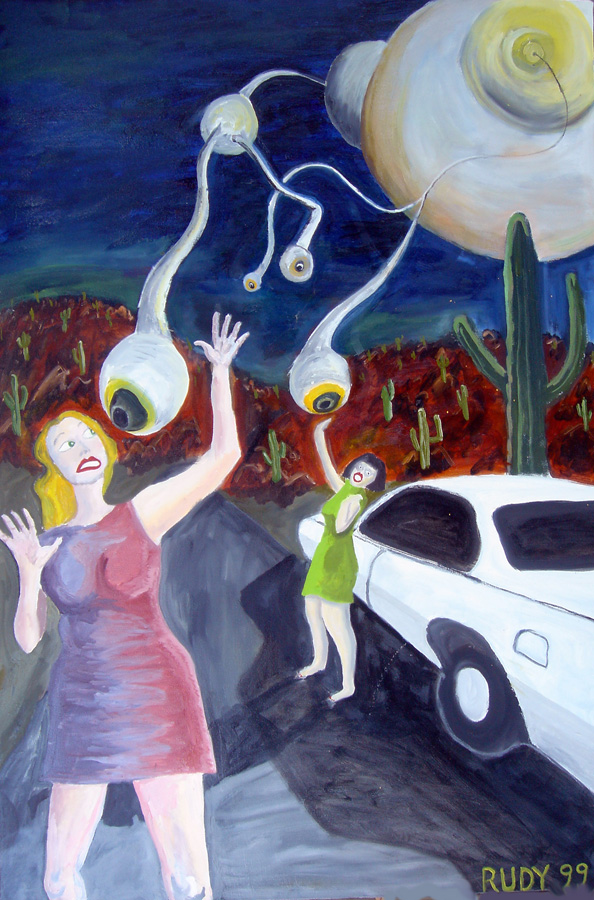
The Arcades of Allah
[Liner Notes for Luchenko’s Third Symphony.]
by Richard Kadrey

In the broiling summer of 2012, a battered long-duration space transport came to rest on the dusty plains of Hovsgol Nuruu, in the Russian zone of northern Mongolia. In the control bay of the craft rescuers found the body of Colonel Vasily Borgov Luchenko. For months, Luchenko’s ship had been considered lost beyond the Asteroid Belt that separates the Earth, Mercury, Venus and Mars from the outer planets. Unbeknownst to the rest of the world, however, Russian ground crews had begun receiving signals from the lost ship a mere forty-eight hours before it made a computer-aided emergency landing.
When the ship was down, it was plain to all that the transport had suffered great damage to both its navigational and life support systems. When Luchenko was removed from the craft, his body temperature was hovering near terminal hypothermia. Fortunately, members of the medical trauma team that had treated the victims of the Stoli space station disaster were present. They succeeded in raising Luchenko’s body temperature sufficiently to safely fly him back to the Laev Hospital in Moscow.
By the end of the week, Colonel Luchenko was pronounced out-of-danger. Six weeks later at a press conference streamed live around the world, Luchenko spoke publicly of his encounter with the extraterrestrials he called the Julia Set. In March of the following year, Luchenko’s First Symphony (Songbird in the Abyss) premiered to enthusiastic reviews in Paris. It was not until his Third Symphony, however, that Luchenko dealt directly with his strange adventure.
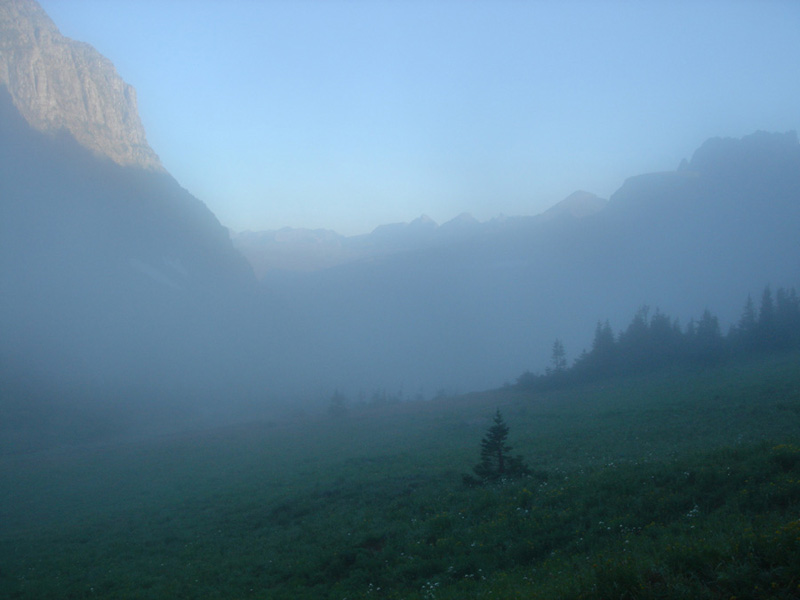
Vasily Borgov Luchenko, failed music student, minor poet with a handful of academic publications, was not a man that many would have guessed could inspire such worldwide devotion as now exists. After his dismissal from the state music academy in Leningrad, he was forced to work as an unskilled laborer, cleaning the enormous fish tanks at the Novosk aqua farms. His devotion to music was clear even then, however, as he somehow completed the libretto for the recently revived Faustian opera, Stalin in the Wilderness. His first completely original large-scale work, however, appeared under the most unusual of circumstances.
Among the patients at the Laev Hospital, was the Japanese pianist Shigeo Yomiuri, an important figure in the first generation of so-called Prosthetic Flowers — youths whose natural artistic gifts were allegedly augmented by the use of intramuscular nanomachines and cranial chip implants. Yomiuri, it turned out, was fascinated by astronomy and had been an avid follower of both the Russian and European space programs. Luchenko confessed his interest in music and asked if he might play for Yomiuri a piece that he had been thinking about for some time. He performed the piece on a World War Two-vintage upright piano in the tiny chapel attached to the hospital. This was the starting point for Luchenko’s Third Symphony, in which the piece now stands as the fourth canto (“Inter-death”). With Yomiuri’s encouragement and promise to record the piece, Luchenko soon developed a plan for a piano suite inspired by his visit with the Julia Set.
Yomiuri premiered Inter-death in Amsterdam the following fall, but already Luchenko was on to bigger things. He realized almost immediately that he needed more room to tell the story of his involvement with space exploration. He put aside “Inter-death” and began writing what became his First Symphony, which told the story of his aborted flight to Mars, and his lonely time in space before meeting the Set. He first performed a piano version of the symphony in front of two hundred patients while still in the hospital. The audience included hospital cooks and maintenance workers as well as doctors, members of the music academy faculty, and clergymen. Prepared by Luchenko’s comments, they proved extremely receptive, and Luchenko himself later wrote that he had never felt greater joy, attention and better understanding of his art.
Following his release from Laev, Luchenko began work on a concert version of the piece for full orchestra. Following the First Symphony’s successful premier in late 1998 (with Shigeo Yomiuri performing the piano and organ parts), Luchenko retired to the French countryside to begin work on his Second Symphony (The Iteration of Shiva). This work, though somewhat less well received than the First, recounts Luchenko’s early years as a poetry and piano student, the influence his father (a decorated veteran of the Afghani Wars) had on Luchenko’s decision to join the military, and his eventual entry into the cosmonaut program. What makes the Second Symphony notable is that for the first time, Luchenko combined his own music with his poetry, displaying a surprising lyric maturity as he wove a text drawn from many of the world’s greatest religions together with ruminations on chaos theory and theoretical physics.
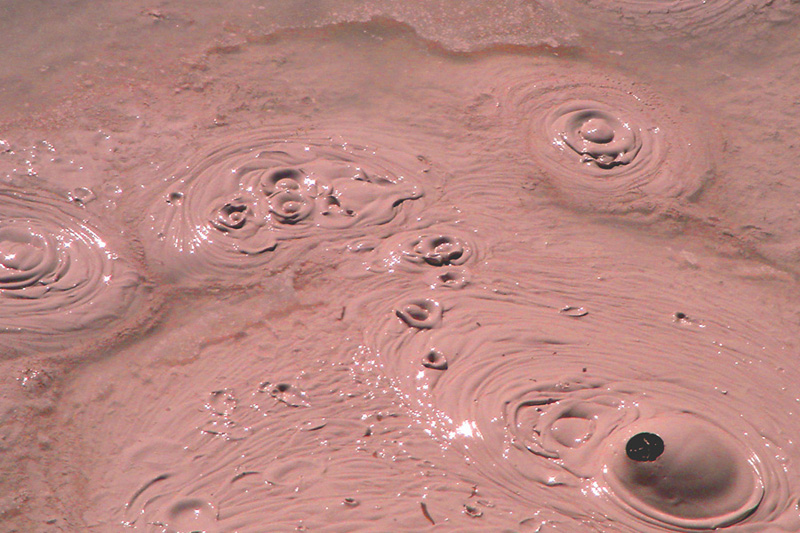
Luchenko’s whole artistic output was based on deep spiritual roots growing out of an early disaffection from the Russian Orthodox church and an interest in Eastern spiritual practices. Mixed with his strong grounding in science (at his father’s insistence), these practices led him to both a musical and a belief system that he likened to space exploration. He always insisted that he was not a mystic, but simply a cosmonaut of music, whose task consisted in the tonal exploration of the universe. The texts sung by the chorus in his Second and ThirdSymphonies, often misunderstood and sometimes bitterly attacked, aim at nothing more than a complete explication of this vision. Indeed, it was the scientific rigor that he brought to his work that attracted so many followers, culminating finally in the quasi-religious White Arcades movement, before their tragic involvement in right-wing Japanese politics.
In Luchenko’s only published book of poetry, Conditions and Singularities (Shambhalla Books, 2008), many ideas important to understanding the Third Symphony are to be found. The image of white “arches” (which gave the White Arcadists their name) recurs throughout. In his introduction to the book, Luchenko spoke of the Muslim prophet Mohammed’s hearing the word of God in the desert, and likened this to his own time with the Julia Set, although he then went on to explain that he had received no “revelations” from the aliens in the biblical sense, and that his communication with the Set was limited. Indeed, the differences in their modes of thought were so profound that he likened the experience to being “locked for months in a room with a lobster and trying to establish a dialog.”
But the idea of the chaotic mutability of Space and Time (and presumably the Afterlife), the actual subject of the Third Symphony, came to him while he was with the Set. After Luchenko’s return to Earth, his whole artistic output was an attempt to reach a new relationship between chaos theory and music, a relationship, in some ways, much closer to computer programming than to traditional compositional techniques. His use of melody “iteration,” the almost infinite expansion of a theme by the application of simple mathematical formulas, was related to Indian music, the Minimalist movement, and the science of fractal geometry. Indeed, the idea of fractals was central to the Third Symphony, both in the sung texts and in the music. The name Luchenko used to describe the aliens, the Julia Set, referred to drawings and equations produced by two French mathematicians during World War One that were considered to be the first primitive expression of what later came to be called the Mandelbrot Set; Luchenko’s extraterrestrial’s apparently resembled certain fractal shapes, and, Luchenko implied, may have even been “living” fractals. The glyphs in the white arcades were fractals, receding infinitely into the arches on which they were “carved”. But it was in the final movement of the symphony that Luchenko made his ultimate statement on Chaos as he tested the bounds of tonality and rhythm to create a musical equivalent of the Set’s vehicle, which he described not as a ship in the ordinary sense, but as a “consciously-directable singularity” and a “theological equation.”
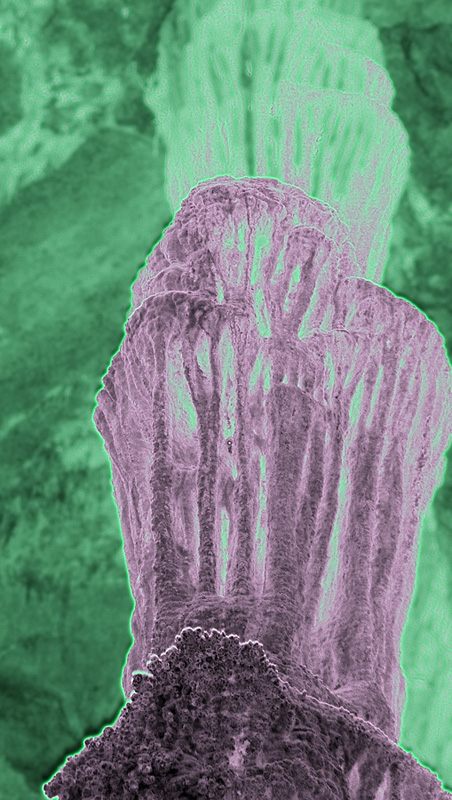
The Third Symphony is large, and not divided into traditional movements since Luchenko wanted to leave room for the piece to expand and contract differently with each performance, and because he did not believe that one could properly break the “turbulent” structure of his music into smaller parts. Nevertheless, in his conductor’s notes he described the piece as having eight “cantos.” Here are the composer’s own words on his music:
Canto 1. “Prayer of Fire.” Five in the morning, the ship leaves the launch pad; a solo soprano sings of flight, her voice surrounded by the buzzing of the orchestra which are other voices, a fog of prayers, doubts, fears, the commands of the mission controllers, and the international telecommunications web fed by all the world’s antennae, a metal forest of infinite complexity. Extend this to the spiritual level and you find the voice of God as it is embedded in the phrase “Allah akbar” and the coordinates of a Lorenz Attractor.
Canto 2. “Color is a degree of darkness allied to Shadow.” Goethe’s famous quote. Light (color) is the language of fractal time, of angels. The brass conjure the overwhelming, burning light that is the ship moving upwards through the atmosphere, then the pointillism of star shine. Later, the theme is iterated to indicate the flickering lights on the consoles of the malfunctioning computers. The piano softly plays the first version of the Chaos theme, as the ship enters into the maelstrom of the Asteroid Belt. The Gamelan section for percussion and strings is the sound of broken heat shields striking the hull of the ship.
Canto 3. “A Newtonian Nightmare.” For chorus alone. Trapped in Time, moving exhausted through empty space. Different sections of the chorus begin and end at will, in opposition to Newtonian math. They sing religious texts relating to fear and enlightenment. Jesus in the wilderness. Buddha under the Bo tree. Mohammed receiving the words of Allah.
Canto 4. “Inter-death.” Piano overlaps with the dwindling voices of singers. This is the zone of no hope. Iteration of the Gamelan section, as the ship is further damaged by asteroid fragments. Breakdown of the ship’s recyclers. The cosmonaut’s bodily waste trails from the recycling units, like the fringed edges of a Mandelbrot Set.
Canto 5. “The Abyss is the Infinite Mosque.” The mosque is the singularity inhabited by the Julia Set. A long and infinitely slow string figure is contrasted by a scherzo for brass and winds which describes the fractal light through which lie the white arcades. The orchestra plays in a mode based on north African scales; a male tenor enacts the call of the muezzin, while the percussion keeps the fractal pulse: Z 2 + Z.
Canto 6. “Light is the Language of Shadow.” Look at something impossible, like the face of God. A creature that lives in Time and three dimensions suddenly encounters fractional time and space. Words long longer function; the chorus sings vowels, syllables, almost making words, but never completing them. Stare into the carving in the white arcades. They are like a Menger sponge, an artifact with an infinite surface area, yet zero volume. Stare hard enough, you seem to merge with the arcades, and are shot headlong down rivers of pure chaos. Is this the language of the Set or the voice of God in the desert?
Canto 7. “Escape Time Algorithm.” This carries echoes of the first, second, and sixth cantos. Back inside the Asteroid Belt, but outside it at the same time. The iteration of identity. Look through the glyphs on the white arcades and watch the ship return the earth. Look at the ship’s screens and see the arcades grow distant. On the ship, the cosmonaut dreams of familiar colors and shapes, of melodies hidden in light. Soon the voices begin — voices from earth. The cosmonaut cannot answer. The chorus is echoed by the orchestra as the cosmonaut in the ship sings to the cosmonaut in the arcades, who sings back to the other on his way to Earth.
Canto 8. “Hymn of Turbulence.” The whole orchestra here, fading to a violin/piano duet, expanding on the Chaos theme. Finally, only the piano is left, and the iterations of melody have led back to the original version of the Chaos theme (The piece may end here or, if the orchestra is willing, it may continue from where the Chaos theme first appears at the end of Canto Two. This repetition can be continued indefinitely; the piece is, technically, endless).
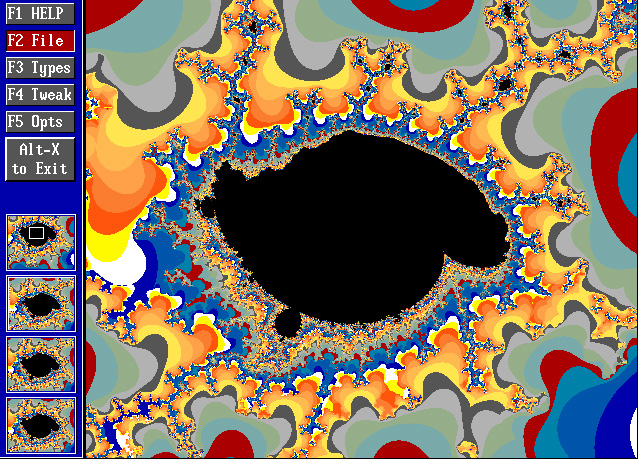
It is still difficult for many people to understand how a liberating (and apolitical) vision as Luchenko’s could have brought about such a tragic and abrupt end to his life and career. Even at this writing, the events surrounding his death remain uncertain. We known that he was gunned down after the Tokyo premier of the Third Symphony. And it is believed that Shigeo Yomiuri, the Prosthetic Flower and, by that time, high-ranking White Arcadist was the gunman. Yomiuri’s jailhouse suicide has, unfortunately, further muddied the waters. Many questions remain unanswered: Did Yomiuri kill, in fact, Luchenko? And did he act alone? And if he did, what was his motive? Why destroy the prophet of his own growing religious movement? Could it have been Luchenko’s opposition to the White Arcadists’ political aspirations (based on a platform of New Age computer babble and Muslim Fundamentalism)? And what, if any, were Yomiuri’s connections to the right-wing Iron Chrysanthemum movement in the Japanese military and their attempted coup d’etat in Tokyo?
Ironically, the one person who could probably answer all these questions is Luchenko himself, the part of him that he left behind with the Julia Set, staring joyfully into the glyphs on the white arcades. If his stories of traveling down rivers of chaos are true, he no doubt saw (and perhaps experienced) his own death many times. From our limited place in Time and Space, we may try to follow Luchenko’s example and look at his death as simply another bend in a Koch curve. Many believers, in fact, do choose to see it that way, and it is to them that we dedicate this memorial album.
---End---
About the Author
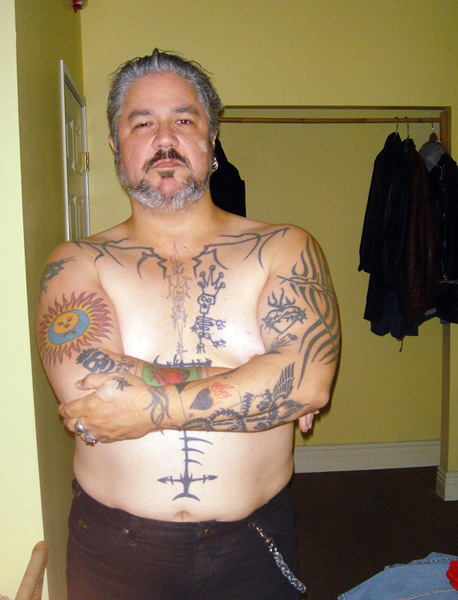
Richard Kadrey is the author of four novels, including the classic Metrophage, and over 60 short stories.